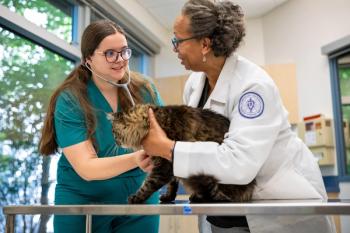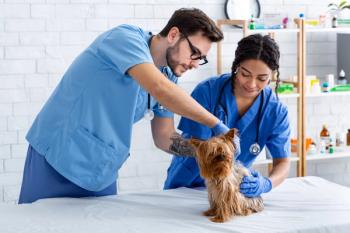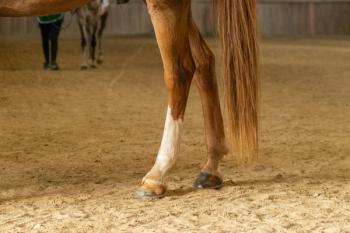
Lawsuits threatened after catastrophic CSU fire; veterinary equine lab offers service credit with waiver
Fort Collins, Colo. -- At least one client of Colorado State University's (CSU) Equine Reproduction Laboratory (ERL) is looking at legal options following the catastrophic fire that destroyed the facility and all of his genetic material stored there.
Fort Collins, Colo. —
At least one client of Colorado State University's (CSU) Equine Reproduction Laboratory (ERL) is looking at legal options following the catastrophic fire that destroyed the facility and all of his genetic material stored there.
CSU officials would not estimate monetary losses from equine sperm, embryos and egg straws, but did say that the fire impacted 175 veterinary clients. And the blaze was estimated at causing between $9 million to $15 million in damages to the physical facility.
Charlie Cox, a Colorado breeder who has worked with the ERL for several years, says he and other clients are considering suing the university for damages, despite a claim from the university that it is not responsible for the lost property of private clients. Some Denver law firms are even seeking out people interested in filing class-action suits, he adds.
Dell Rae Moellenberg, senior community and media relations coordinator tells DVM Newsmagazine that the fire was "devastating" to the university from a educational and research perspective, as well as to private clients served by the program.
"The fire destroyed the building and also damaged equine sperm, embryo and egg straws that had been stored on behalf of about 175 clients," Moellenberg says. "The cause of the fire is undetermined and the PFA/ATF investigation has been closed."
Clients who stored materials at the equine center were told in advance that the university would not be responsible for insuring client property stored at the facility, Moellenberg notes. And the "vast majority" of clients who used the storage facilities at the center signed a contract agreeing that they would be responsible for providing their own insurance.
Still, Moellenberg says, many of CSU's equine clients are upset by the materials lost in the fire.
"We have been actively working to help clients begin to recover from their loss," Moellenberg says. "Even though there is no obligation to do so, the university recently offered a $1,000 credit toward future ERL services to each client who experienced a loss in the fire. The ERL is offering services to collect and freeze semen straws to help clients generate a new inventory and to mitigate the impact of the fire."
But Cox claims that not every client at the ERL signed the same contract, including himself.
"The fact is there are several different versions of the contract floating around and some of us were never asked to sign a contract," he says.
Even for those who did sign the contract, Cox says the question to ask the courts will be, did the university in fact follow its own obligations in that contract to care for these samples in keeping with industry standards and practices?
Cox says he was notified of the losses at the ERL shortly after the July fire, but was told not all the straws were lost. Some, including his, would be tested for damage. Eventually, he was told his straws were destroyed, and that the university's insurance carrier would not cover the loss of private clients.
But, according to Colorado law, individuals have just 180 days from an event to file suit for damages against a state entity, Cox says. In this case, that gives clients of the ERL until Jan. 21 to file a form with the state attorney general's office. Those who wait until CSU's March 1 deadline, then decide not to sign the waiver, will have missed their opportunity to file suit, Cox cautions.
"The university pioneered many techniques, and I hold them in high regard," Cox says. "(But) people had a lot of assurance based on the university's experience that they would take good care of samples."
Fire officials ruled the cause of the blaze as "undetermined" in late 2011, and CSU says the building already has been torn down.
The 6,000-square-foot building was built in 1979 and underwent three expansions/renovations during its history—the last in early 2004. The building was used for teaching, demonstrations, offices and research. Arrangements are continuously being made to accommodate the 2012 breeding season in light of the loss of the facility, according to CSU.
Architects have been hired to create a plan to rebuild the center, but insurance reimbursements will only cover damage costs related to the fire, CSU notes.
Newsletter
From exam room tips to practice management insights, get trusted veterinary news delivered straight to your inbox—subscribe to dvm360.





